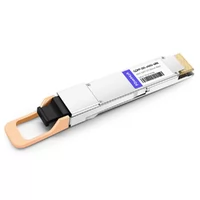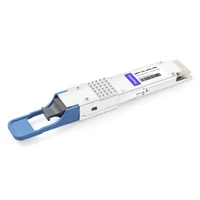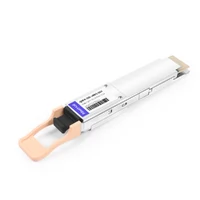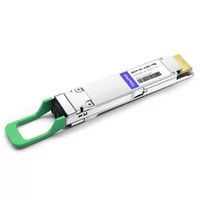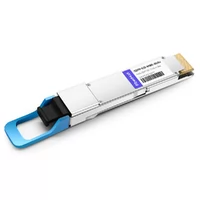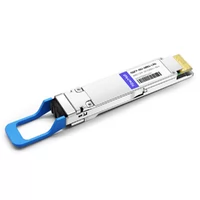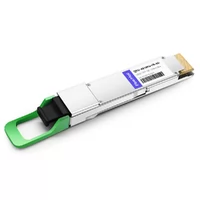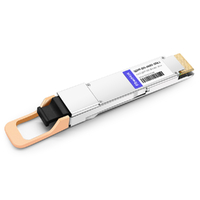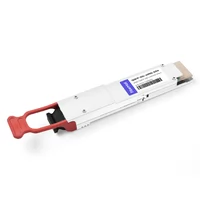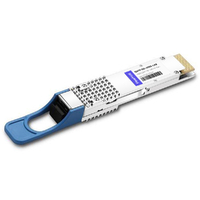In a world where fast data is the game’s name, 400G QSFP-DD (Quad Small Form-factor Pluggable Double Density) transceivers and cables are among the top networking technologies. These transceivers were created to meet the needs of data-hungry applications. As such, they allow for faster data transfers, which makes them indispensable in modern-day data centers and high-performance networks. This manual intends to give you an all-inclusive description of 400G QSFP-DD technology, focusing on its structure, pros, cons, and available cable options. By reading this article up until now, readers should have gathered enough knowledge on these sophisticated measures that would enable them to improve the efficiency and productivity of their networks besides knowing what components suit best for each application context.
Table of Contents
ToggleWhat is a 400G QSFP-DD Connector?
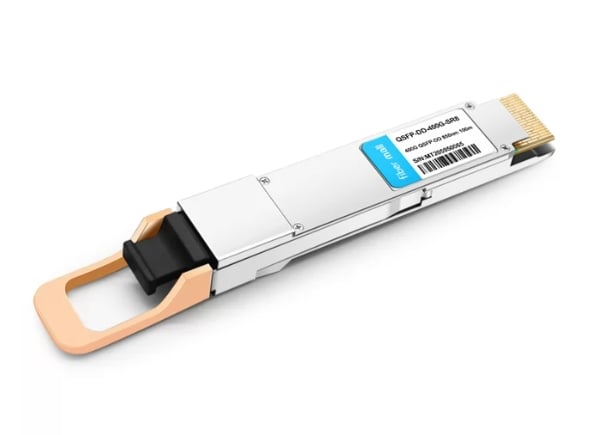
Understanding the Basics of 400G QSFP-DD
400G QSFP-DD connectors represent a crucial step in the history of transceiver technology, which makes it possible to have a higher data rate while being compatible with previous interfaces. Compared to its precursor, the QSFP28 transceiver, this connector has twice more density, thus allowing for 8 channels of connection, each with the ability to transmit a maximum of 50 Gbps. By so doing, this enables 400G QSFP-DD transceivers to achieve total bandwidths that are equivalent to 400 Gigabits per second. This design also comes with better thermal management features that can be very handy in high-performance data center applications. People who want to maximize their network infrastructure and ensure everything works well across different devices and applications must know these connectors.
How Does a 400G QSFP-DD Connector Work?
The QSFP-DD 400G connector uses several lanes for data transmission through parallelism. PAM-4 (Pulse Amplitude Modulation with four levels), among other advanced modulation techniques, is used to achieve 50 Gbps in every of the eight lanes found in a QSFP-DD transceiver. The information is distributed across these channels during transmission so that data can be sent and received simultaneously. Transferring data in parallel improves speed while reducing delay or latency. In addition, this interconnect boasts improved electrical interfaces and an integrated optical module that enables high-speed optical links and guarantees good heat performance. With this design, active or passive cooling systems can be applied, both necessary for keeping appropriate operating temperatures within data centers.
Key Features of 400G QSFP-DD Connectors
- High Bandwidth Capacity: The 400G QSFP-DD connectors can support 400 gigabits per second. They use eight different lanes, each carrying 50 Gbps, thus enhancing the efficiency of data transfer in line with current network requirements.
- Parallel Data Transmission: Parallel data transmission is made possible using advanced modulation techniques like PAM-4, which can significantly increase throughput and decrease latency when transferring information.
- Improved Thermal Management: These types of connectors have more complex designs for managing heat, among them active or passive cooling options are available; this ensures top performance under high-density data centre conditions where reliability matters most.
- Compatibility and Flexibility: The QSFP-DD connector is backward compatible with older versions such as QSFP+, allowing for versatility within different network infrastructures while making integration easier.
- Robust Electrical Interfaces: It becomes possible to connect optics seamlessly at very high speeds with demanding applications that are kept on track through robust electrical interfaces.
How to Choose the Right 400G QSFP-DD Transceiver?
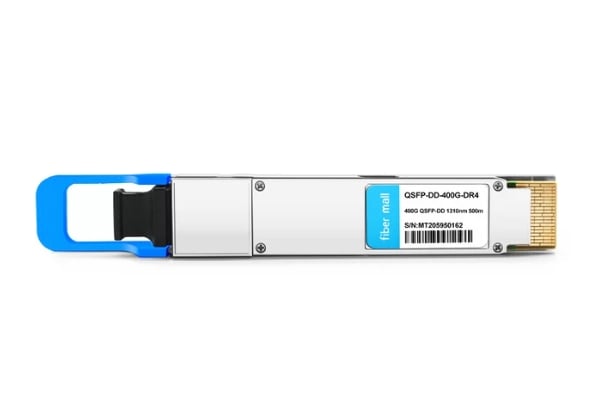
Factors to Consider: Data Rate and Distance
While choosing the suitable 400G QSFP-DD transceiver module, it is essential to consider both data rate and distance requirements applicable to that particular use case.
- Requirements for Data Rate: The main concern is ensuring the device supports your desired network speed. These modules are designed to provide a maximum of 400 Gbps. However, bandwidth may vary with different applications; hence, there is a need to understand what is required because this affects performance, too. For example, systems for high-frequency trading or wide-scale data processing might need all 400 gigabits per second, while others will work well with lower speeds.
- Distance Requirements: It is also critical to know how far apart devices can be from each other when using these transceivers. One should look at effective operational ranges offered by various types of fiber optics supported by 400G QSFP-DD modules. Multimode fiber can cover up to one hundred meters, while single-mode fibers extend this range even further, sometimes reaching ten kilometers or more in distance. Therefore, one must select such a module whose coverage matches their node separation to avoid much signal loss, leading to poor data integrity.
By considering these considerations, network planners can choose modules based on their infrastructure’s capabilities, ensuring the best possible utilization and scalability within our networking solutions.
Comparing 400G QSFP-DD DR4, LR4, and SR8
The various kinds of 400G QSFP-DD transceivers are based on their design and application, with DR4, LR4, and SR8 being some of them.
- 400G QSFP-DD DR4: This type is designed for short-range applications that use multimode fiber (MMF) to achieve a data rate of 400 Gbps over distances up to 500 meters. With four channels – each providing a data rate of 100 Gbps – this option is ideal for high-density data center interconnects, mainly when used with 400G QSFP-DD AOC solutions.
- 400G QSFP-DD LR4: The Long Range LR4 transceiver is intended for longer distances. It can transmit data up to 10 kilometers using single-mode fiber (SMF). It works well where high throughputs are needed over extended distances, like inter-building links or regional DCIs. LR4 transmits data in four channels of 100 Gbps each.
- 400G QSFP-DD SR8: This transceiver supports high-bandwidth applications over short distances with the help of multi-mode fiber. It achieves 400 Gbps across eight channels, thus increasing capacity for parallel optical data paths. The SR8 comes in handy in data centers with densely connected fibers while consuming less power.
Deciding between DR4, LR4, or SR8 transceivers will depend mainly on distance requirements, bandwidth needs, and fiber infrastructure available, among other factors, which enable network engineers to optimize connectivity strategies as required.
Compatibility with Existing QSFP and OSFP Modules
Regarding the shape and electrical interface, 400G QSFP-DD modules are generally compatible with other QSFP and OSFP modules. Simply put, the QSFP-DD module complies with 40G/100G QSFP interfaces by design so that it can be smoothly used in existing networks without hardware updates. This feature enables network operators to maximize infrastructure investments while moving towards higher bandwidth applications.
It is also essential to address compatibility with OSFP modules. The OSFP standard was created for 400G and had similar electrical specifications as QSFP-DD, ensuring inter-operability between these two form factors where they may co-exist within an environment. However, physical integration will vary depending on connector designs, but care should be taken as the direct connection of a QSFP-DD into an OSFP port is not supported.
Both types of transceivers have backward compatibility support with earlier versions, enabling businesses to expand their network capacity without doing complete overhauls, given that they follow specified connection standards. This ability to work together is necessary for a smooth flow of information during upgrades while optimizing performance across networks.
What Are the Applications of 400G QSFP-DD in Data Centers?
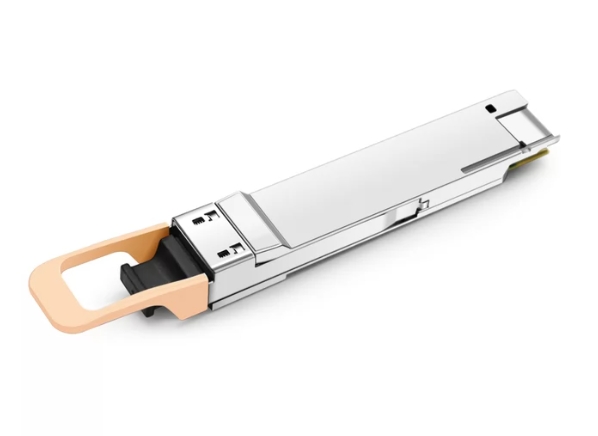
Role in High-Density Data Centers
The use of 400G QSFP-DD modules is essential in high-density data centers catered for by the rapidly growing demand for bandwidth and increased networking intricacies. These modules allow faster data transmission, significantly reducing latency and enhancing overall network efficiency. Being small in size, they are designed with more ports that can be used per rack unit, thus enabling any given provider to make good use of their space while providing the expandability required to accommodate the organization’s future growth.
In addition, these 400G QSFP-DD modules support various applications like cloud computing, big data analytics, and artificial intelligence deployments, where large amounts of information need to be moved fast. With this kind of technology implemented within such centers, traffic loads can be managed effectively while consuming power optimally, hence becoming an integral part of contemporary high-performance computing environments. Also, their compatibility with existing infrastructures allows cost-effective upgrading paths so that firms do not have to invest heavily in new hardware when improving capabilities within their data centers is concerned.
Benefits of Reducing Operational Costs
Adopting 400G QSFP-DD modules in data centers has many benefits. These modules can reduce operational costs significantly. This is because they minimize power consumption per bit transmitted, essential in managing energy bills when dealing with large-scale operations. Businesses can realize considerable savings over time if they use 400G OSFP technology while minimizing power usage without compromising performance.
Moreover, QSFP-DD increases port density, allowing network equipment consolidation within data centers, thus reducing physical space requirements. Also, fewer devices mean less heat and lower cooling costs.
Furthermore, this technology has scalability features where organizations can implement incremental upgrades instead of full-scale replacements, saving on capital expenditure and making network infrastructure evolution more manageable for them. In other words, such an environment speeds up traffic while simplifying activities, thus enabling efficiency improvement and financial sustainability models in operation frameworks based on 400G QSFP-DD module utilization at different points of a Data Centre Network (DCN).
Frequently Asked Questions About 400G QSFP-DD Transceivers
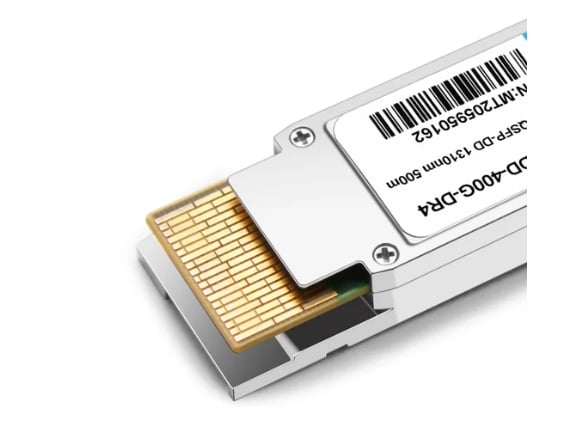
What is the Difference Between LR4, FR4, and DR4?
The main differences between LR4, FR4, and DR4 transceivers are their data rates, reach, and applications.
- Long Range 4 (LR4): These are designed for long-distance communication. They can transmit over single-mode fiber for up to 10km at a wavelength of 1310nm. They have a speed of 100 Gbps, making them suitable for use in metropolitan area networks and other applications that need more coverage, such as those using QSFP-DD ports.
- Fiber Reach 4 (FR4): FR4 also works at a speed of 100 Gbps but is optimized for shorter distances, usually around 2km. This type uses wavelength multiplexing and is mainly used in interconnecting data centers because it balances cost efficiency and reachability.
- Short Range 4 (DR4): On the other hand, DR4 is made specifically for short-range connections that may go up to about 500m effectively. It operates at an optimum wavelength of 850nm, hence being ideal for high-density environments like data centers. They have lower costs per link, which suits high speeds within confined areas.
In conclusion, all three types can support data rates at least equal to or greater than one hundred billion bits per second. At the same time, their differences come in terms of how far they work best over and where they should be applied by different organizations depending on specific networking needs.
Can 400G QSFP-DD Modules Be Used with 100G QSFP Ports?
400G QSFP-DD modules cannot be used in 100G QSFP ports because they have different designs and interfaces. Although both are designed for high-speed data transmission, the electrical and optical requirements of 400G modules are meant to support higher bandwidths, which can only be achieved by utilizing data rates of up to 400 Gbps. On the other hand, the maximum throughput that a 100G QSFP port can handle is limited to 100 Gbps.
However, some reversible transceivers exist, like the 100G QSFP28 module, which works in either a 100G environment or with a scaled-down version of itself on a 400G capable infrastructure. While directly connecting these two types might not work, organizations can deploy one hundred gigabit transceivers within a more comprehensive four hundred gigabit network context to ensure ports are used optimally and improve future upgradability flexibility.
What Are the Key Specifications of 400G Optical Transceivers?
To fulfill the increasing requirement for high-bandwidth connectivity, 400G optical transceivers are produced. These are some of their most important features:
- Data Rate: Named, these 400G optical transceivers can provide speeds up to 400 Gbps that allow quick transmission of data, which is perfect for large data centers and business networks.
- Form Factor: QSFP-DD (Quad Small Form-factor Pluggable Double Density) and OSFP (Octal Small Form-factor Pluggable) are common form factors used in this product because they offer flexibility in application and easy integration into existing infrastructures.
- Distance and Reach: The distance between two points may vary greatly, so it is good to know that such transceiver modules have different types – short-range (SR) for intra-data center connection or long-range (LR, ER), which allows transmitting over several kilometers.
- Wavelengths: Generally, multimode fiber needs about 850nm. In contrast, single-mode fibers require either 1310nm or 1550 nm wavelength operation. Optimization should be based on the media type used during installation, but people usually follow this rule.
- Interface Standards: Compliance with IEEE 802.3bs standard ensures that any manufacturer’s device will work with another vendor’s system without problems.
In general, these specifications show us that we can achieve a high-speed data rate while being compatible with future pluggable double-density solutions, among other advancements, such as those related to networking technology.
What Are the Different Types of 400G QSFP-DD Cable Assemblies?
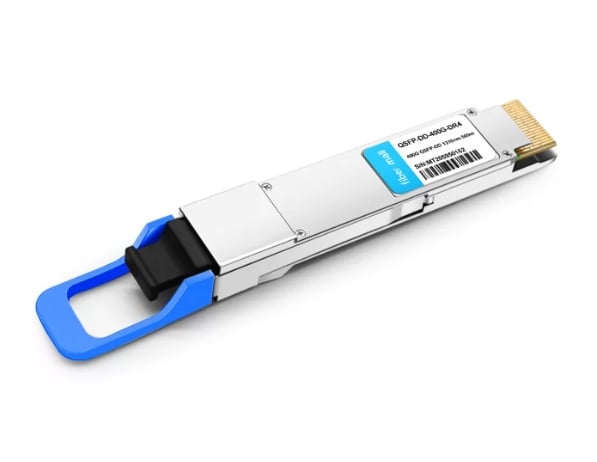
Understanding Active Optical Cable (AOC) and Direct Attach Cable (DAC)
Active Optical Cables (AOCs) and Direct Attach Cables (DACs) are two of the most popular kinds of cable assemblies in 400G QSFP-DD applications, and each has features that suit different networking needs.
- Active Optical Cable (AOC): AOCs use optical fibers integrated with active electronic components to extend the data transmission distance—typically up to 100 meters for multimode fiber. Their lightweight design and flexibility make them perfect in high-density environments like data centers. Furthermore, AOCs are not easily affected by electromagnetic interference, thus ensuring stability in performance.
- Direct Attach Cable (DAC): Unlike AOCs, DACs are copper cables terminated with connectors on both ends meant for short-distance connections, typically within 7 meters. They provide a low-cost option for quick data transfer at higher speeds where distance is limited. DACs can be easily installed and have high reliability; hence, they are frequently used between servers and switches or among switches within racks.
Whether to use AOC or DAC depends on several factors, such as the required distance, weight limitation, cost considerations, and environmental conditions of the deployment site.
Single-Mode Fiber (SMF) vs Multi-Mode Fiber (MMF)
Single-mode fiber (SMF) and Multimode Fiber (MMF) have different performance levels because they are made for different applications.
- Single Mode Fiber (SMF): SMF has a small core diameter of about 8-10µm, allowing only one mode of light to propagate. This makes it possible for SMFs to cover longer distances that can exceed 10 kilometers while having higher bandwidths at the same time. These characteristics make single-mode fiber ideal for long-haul telecommunication systems and high-capacity data networks since they have low attenuation as well as good resistance against signal degradation.
- Multimode Fiber (MMF): In contrast, multimode fibers have larger core diameters ranging from 50µm up to 62.5µm, which permits multiple modes of light propagation within them. For this reason, it becomes easier for data transmission over short distances where OM3 supports up to 300 meters, and OM4 goes up to 400 meters, common in data centers and local area networks (LANs). Nevertheless, MMFs are cheaper when used for short-reach applications but suffer from increased modal dispersion that may affect data integrity over longer links.
Ultimately, one should choose either SMF or MMF depending on the particular needs of their network, such as distance requirements, bandwidth demand, and the type of application involved, thus ensuring maximum efficiency and cost-effectiveness.
Breakout Cables and Their Uses in Networking
Breakout cables are an important part of modern networking. They make it possible to connect high-density environments with individual devices. These cables are commonly used in telecommunications and data centers. Breakout cables consist of a multi-fiber cable that branches out into multiple smaller connections which means many devices can be connected at once. This type of cabling makes network layouts more efficient, reduces the physical footprint required for connections, and simplifies cabling management.
One main benefit of breakout cables is that they save space while increasing connectivity options. For example, just one 12-fiber breakout cable can connect up to twelve different devices. This cuts down on clutter in server racks and improves airflow throughout them as well. Additionally, these types of cables work with LC, SC, or MPO connectors, so there is flexibility when it comes to what kind of connector will work best for certain network configurations that need to be made. In areas where a lot of bandwidth is needed, like data centers, breakout cables help manage this demand without sacrificing signal integrity, which is why network architects and engineers who want their performance and scalability optimized should use them all the time.
Reference Sources
Frequently Asked Questions (FAQs)
Q: What is a 400G QSFP-DD transceiver?
A: To hold up 400 Gigabit Ethernet (400G Ethernet) networks, a 400G QSFP-DD transceiver is a high-speed and pluggable transceiver module. It complies with the QSFP-DD MSA (Quad Small Form Factor Pluggable-Double Density Multi-Source Agreement) and is ideal for data communication applications that need high density and bandwidth.
Q: What are the different types of 400G QSFP-DD transceivers available?
A: Some of the most common types of 400G QSFP-DD transceivers include QSFP-DD SR8, QSFP-DD LR4, and QSFP-DD FR4. Each type serves different applications in optical communication networks as they were designed for specific distance requirements.
Q: What is the range of the QSFP-DD LR4 transceiver?
A: The maximum reach supported by the QSFP-DD LR4 transceiver is 10km over single-mode fiber. It uses wavelength division multiplexing (WDM) to enable long-haul transmission of optical signals.
Q: How does QSFP-DD SR8 differ from QSFP-DD FR4?
A: For short-reach applications within 100m over multimode fiber using PAM4 signaling, you can take advantage of the fact that the former has been designed while considering this environment, whereas four wavelengths in the CWDM grid are used by the latter to support intermediate distances up to 2km over single mode fiber.
Q: What is the purpose of the QSFP-DD form factor?
A: To accommodate higher data rates and more ports per line card than what was possible with previous designs alone, like those found on a switch backplane or server motherboard, the existing design, known simply as “QSFP28,” was enhanced through an expansion called “QSFFP-DD.” This allows for 400G QSFP-DD transceivers to be used within data centers and high-performance computing networks where there is a growing need for bandwidth.
Q: What does the MSA Group do with 400G QSFP-DD transceivers?
A: The MSA Group, or Multi-Source Agreement Group, is responsible for setting the rules and standards of the QSFP-DD form factor. This guarantees that different companies’ transceivers and systems can work together without problems, which is very important for the growing FS community.
Q: Can I use a 400G Ethernet application with a QSFP-DD transceiver?
A: Yes, 400G Ethernet applications are supported by QSFP-DD transceivers. These offer high-bandwidth scalable solutions for current data communication networks where data can be sent at speeds of up to 400 gigabits per second.
Q: What distinguishes passive copper cables from active optical cables for 400G QSFP-DD?
A: Passive copper cables do not need power to send signals over short distances, while active optical cables (AOCs) use fiber optic technology to achieve greater transmission distances with lower loss at the expense of consuming electric power required for converting electrical signals into light ones and vice versa in 400G QSFP-DD AOCs.
Q: Which connectors are used together with 400G QSFP-DD transceivers?
A: MPO-12 connectors are commonly used with 400G QSFP-DD transceivers for multimode fiber applications, whereas LC connectors are employed in single-mode fiber applications to enable the connection between fiber optic cables and the transceiver modules.
Q: How does the cable management improve due to the QSFP-DD form factor?
A: Higher port density allows more connections within the same physical space, reducing unnecessary wiring and making it easier and faster to manage cables in data center and networking environments.
Related Products:
-
 QSFP-DD-400G-SR8 400G QSFP-DD SR8 PAM4 850nm 100m MTP/MPO OM3 FEC Optical Transceiver Module
$149.00
QSFP-DD-400G-SR8 400G QSFP-DD SR8 PAM4 850nm 100m MTP/MPO OM3 FEC Optical Transceiver Module
$149.00
-
 QSFP-DD-400G-DR4 400G QSFP-DD DR4 PAM4 1310nm 500m MTP/MPO SMF FEC Optical Transceiver Module
$400.00
QSFP-DD-400G-DR4 400G QSFP-DD DR4 PAM4 1310nm 500m MTP/MPO SMF FEC Optical Transceiver Module
$400.00
-
 QSFP-DD-400G-SR4 QSFP-DD 400G SR4 PAM4 850nm 100m MTP/MPO-12 OM4 FEC Optical Transceiver Module
$450.00
QSFP-DD-400G-SR4 QSFP-DD 400G SR4 PAM4 850nm 100m MTP/MPO-12 OM4 FEC Optical Transceiver Module
$450.00
-
 QSFP-DD-400G-FR4 400G QSFP-DD FR4 PAM4 CWDM4 2km LC SMF FEC Optical Transceiver Module
$500.00
QSFP-DD-400G-FR4 400G QSFP-DD FR4 PAM4 CWDM4 2km LC SMF FEC Optical Transceiver Module
$500.00
-
 QSFP-DD-400G-XDR4 400G QSFP-DD XDR4 PAM4 1310nm 2km MTP/MPO-12 SMF FEC Optical Transceiver Module
$580.00
QSFP-DD-400G-XDR4 400G QSFP-DD XDR4 PAM4 1310nm 2km MTP/MPO-12 SMF FEC Optical Transceiver Module
$580.00
-
 QSFP-DD-400G-LR4 400G QSFP-DD LR4 PAM4 CWDM4 10km LC SMF FEC Optical Transceiver Module
$600.00
QSFP-DD-400G-LR4 400G QSFP-DD LR4 PAM4 CWDM4 10km LC SMF FEC Optical Transceiver Module
$600.00
-
 QDD-4X100G-FR-Si QSFP-DD 4 x100G FR PAM4 1310nm 2km MTP/MPO-12 SMF FEC CMIS3.0 Silicon photonics Optical Transceiver Module
$650.00
QDD-4X100G-FR-Si QSFP-DD 4 x100G FR PAM4 1310nm 2km MTP/MPO-12 SMF FEC CMIS3.0 Silicon photonics Optical Transceiver Module
$650.00
-
 QSFP-DD-400G-SR4.2 400Gb/s QSFP-DD SR4 BiDi PAM4 850nm/910nm 100m/150m OM4/OM5 MMF MPO-12 FEC Optical Transceiver Module
$900.00
QSFP-DD-400G-SR4.2 400Gb/s QSFP-DD SR4 BiDi PAM4 850nm/910nm 100m/150m OM4/OM5 MMF MPO-12 FEC Optical Transceiver Module
$900.00
-
 QSFP-DD-400G-ER4 400G QSFP-DD ER4 PAM4 LWDM4 40km LC SMF without FEC Optical Transceiver Module
$3500.00
QSFP-DD-400G-ER4 400G QSFP-DD ER4 PAM4 LWDM4 40km LC SMF without FEC Optical Transceiver Module
$3500.00
-
 QSFP-DD-400G-LR8 400G QSFP-DD LR8 PAM4 LWDM8 10km LC SMF FEC Optical Transceiver Module
$2500.00
QSFP-DD-400G-LR8 400G QSFP-DD LR8 PAM4 LWDM8 10km LC SMF FEC Optical Transceiver Module
$2500.00

